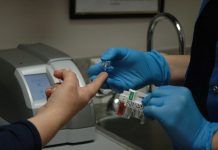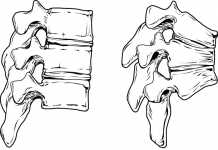May 2010 - The popular diabetes medication metformin works in different fashion than the current widely accepted view. This new finding could lead to wider use of the drug, particularly in people with cancer and diseases linked to TSC deficiency like tuberous sclerosis and lymphangioleiomyomatosis (LAM).
The results of this study, led by George Thomas, PhD, scientific director of UC's Metabolic Diseases Institute, are published in the May 5 edition of Cell Metabolism.
Metformin, marketed first by Bristol-Myers Squibb as Glucophage and now available in generic form and a number of combinations, is widely prescribed to people with type 2 diabetes and may be extended to the treatment of certain cancers. The drug blocks the production of glucose (sugar) and increases sensitivity to insulin�a hormone that converts sugar and other foods into energy within the body.
Researchers have thought that metformin, an energy-deprivation agent, disables the mTOR (mammalian target of rapamycin) complex by first activating the tuberous sclerosis complex (TSC) proteins through the enzyme AMPK.
Thomas' team determined that mTOR could actually be disabled without AMPK, and even without TSC. The team was able to determine that metformin works to knock out mTOR through another enzyme, RAG GTPase.
Continue Reading Below ↓↓↓
"We've poked a hole in dogma," says Thomas, a professor in the cancer and cell biology department. "Scientists can and should go back and ask about things they had crossed off their list."
The importance of this finding, says Thomas, is the possibility it holds for broader use of metformin.
"Metformin is already prescribed to 100 million people worldwide, and our study raises the question, 'Could this drug be used even more widely?'"
A drug like metformin, which improves insulin sensitivity, could be seen as a possible viable alternative to drugs that target mTOR, but that may have long-term deleterious effects on insulin production. Type 2 diabetes results from the body's inability to properly use insulin. If left unmanaged, diabetes can lead to vision loss, kidney failure, heart attack, stroke and nerve or blood vessel damage.
Study co-authors Nabeel Bardeesy, Sophie Bru� le�, Patrick Dennis, Pawan Gulati, Adem Kalender, Bruce Kemp, So Young Kim, Sara Kozma, Andre� Marette, John Schlager, Anand Selvaraj and Benoit Viollet.
Kalender and Selvaraj are supported by appointments to the Research Participation Program at the Air Force Research Laboratory, Human Effectiveness Directorate, Bioscience and Protection, Wright Patterson Air Force Base, administered by the Oak Ridge Institute for Science and Education. Thomas and Kozma are supported by grants from the National Institutes of Health (NIH) Mouse Models for Human Cancer Consortium, and the NIH's National Institute of Diabetes and Digestive and Kidney Diseases.
UC's Metabolic Diseases Institute, named in 2009, is located on UC's Reading Campus, formerly the Genome Research Institute, and is home to a team of researchers who focus on the genetic, molecular and cellular mechanisms of metabolic disorders, cancer and cardiovascular disease.
Thomas, the John and Gladys Strauss Endowed Chair in Cancer Research, is part of the Cincinnati Cancer Consortium, a joint cancer program involving the UC College of Medicine, Cincinnati Children's Hospital Medical Center and UC Health University Hospital. The collaborative initiative brings together interdisciplinary research teams of caring scientists and health professionals to research and develop new cures, while providing a continuum of care for children, adults and families with cancer.
Source: University of Cincinnati Academic Health Center










